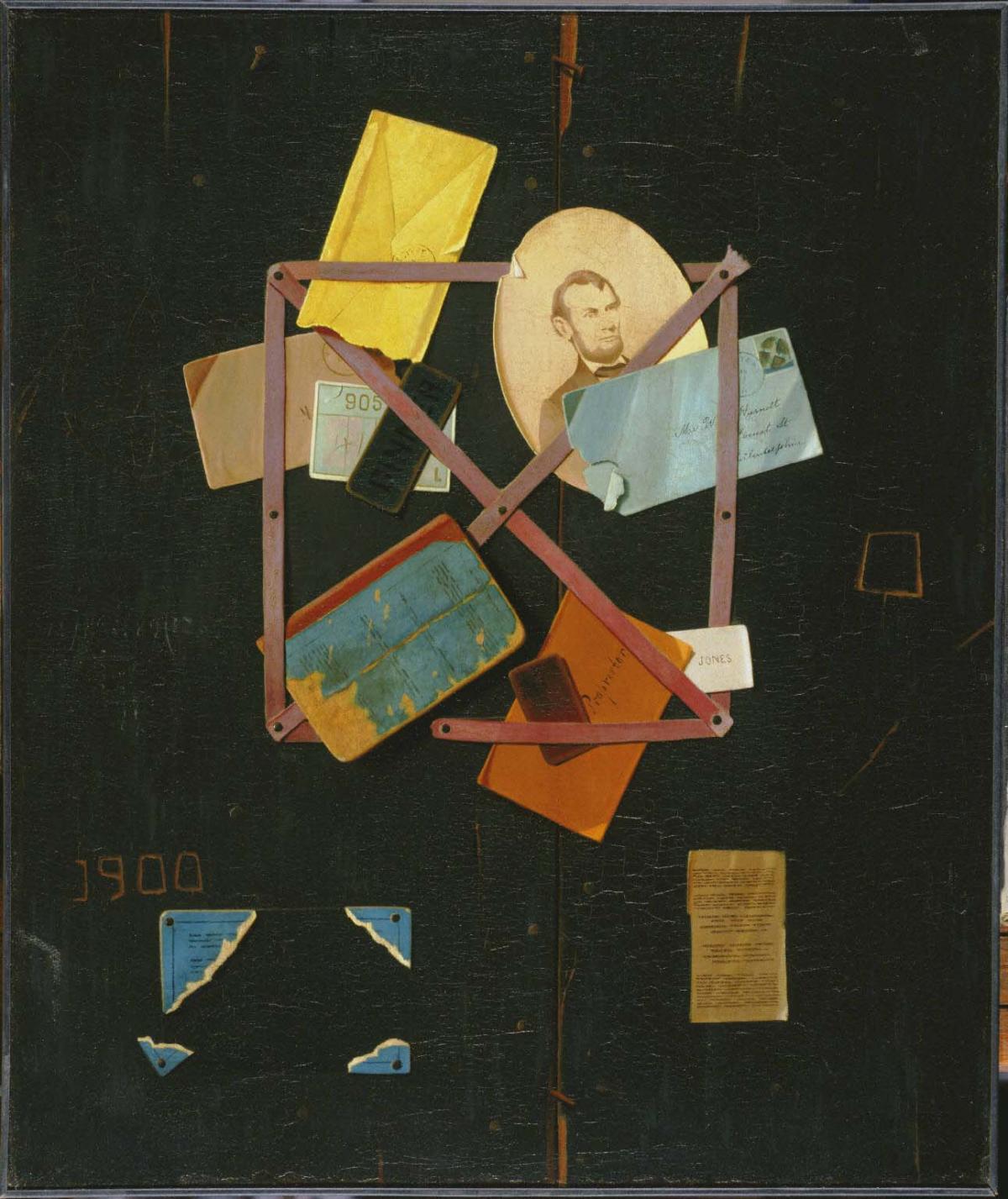Old Time Card Rack
John Frederick Peto ( 1900 )

Trompe-l’oeil painting, traceable to antiquity and revived in the Renaissance, flourished in the hands of American artists such as Raphaelle Peale, William Harnett, and John Frederick Peto. A pragmatic and almost documentary illusionism informed the genre in its revival in the United States, where typically dry literal-mindedness and utilitarianism contradicted the sensuality, cryptic symbolism, and memento mori themes common to the Dutch school. Yet echoes of the vanitas canon, the underlying implication that the world’s riches are in vain, dominated Peto’s pictures. His images became increasingly mysterious, poignant, and enigmatic. Old Time Card Rack reflects this trend and substantiates Peto’s unique position in American nineteenth-century painting. Early in his career Peto painted such racks for Philadelphia businesses with letters and notes relating specifically to the patron.
The history of Old Time Card Rack remains largely a mystery. The painting was originally believed to be painted by William Harentt, Peto’s friend and teacher. It was recently discovered that Peto had inscribed the reverse side of the painting, indication that is was executed when he was living in Island Height, New Jersey, around 1900. The only other clues to the painting’s history before 1939 are a label found on its reverse and a letter offering this painting for sale in 1930. Without listing the artist’s name or date, the label states the gallery’s name and address, ‘Earle’s Gallery at 816 Chestnut Street, Philadelphia’, and ‘Old Reminiscences, No. 67, Price: $4,000.00’. Since Earle’s Gallery had moved to a different Chestnut Street address by 1903, the label’s date can be narrowed to between 1900 and 1902 unless the old label was retained for a time. Therefore, the forgery of this painting into a Harnett, undoubtedly perpetrated for monetary gain, as that was an incredibly high sum for a Peto painting, occurred quite early in the painting’s life, at a time when Peto himself lived several hours away in Island Heights.
Old Time Card Rack was reattributed to Peto in 1949 by Alfred Frankenstein, art critic for The San Francisco Chronicle. He built his case on several factors: the posthumous dating of two works—Harnett died in 1892; technical data, including obscured or painted-over inscriptions by an unknown hand; the representation of objects known to have belonged to Peto; and stylistic comparisons of both artists’ work. Frankenstein further established the stretcher to be of a type used frequently by Peto but never by Harnett.
In 1939, Duncan Phillips purchased this painting as a work of William Harnett from Edith Halpert, who had been largely responsible for the “rediscovery” of Harnett in the twentieth century. In spite of her attempts to link Harnett (and American trompe-l’oeil still life in general) to surrealism or cubism, Phillips’s response seems to have been direct and visual rather than cerebral or theoretical, for he received the news of the reattribution to Harnett with equanimity. Through his assistant, Elmira Bier, he answered an inquiring colleague that “he bought the painting because he liked it, and not because it was a Harnett.” This fact did not change when he discovered it to be a Peto.